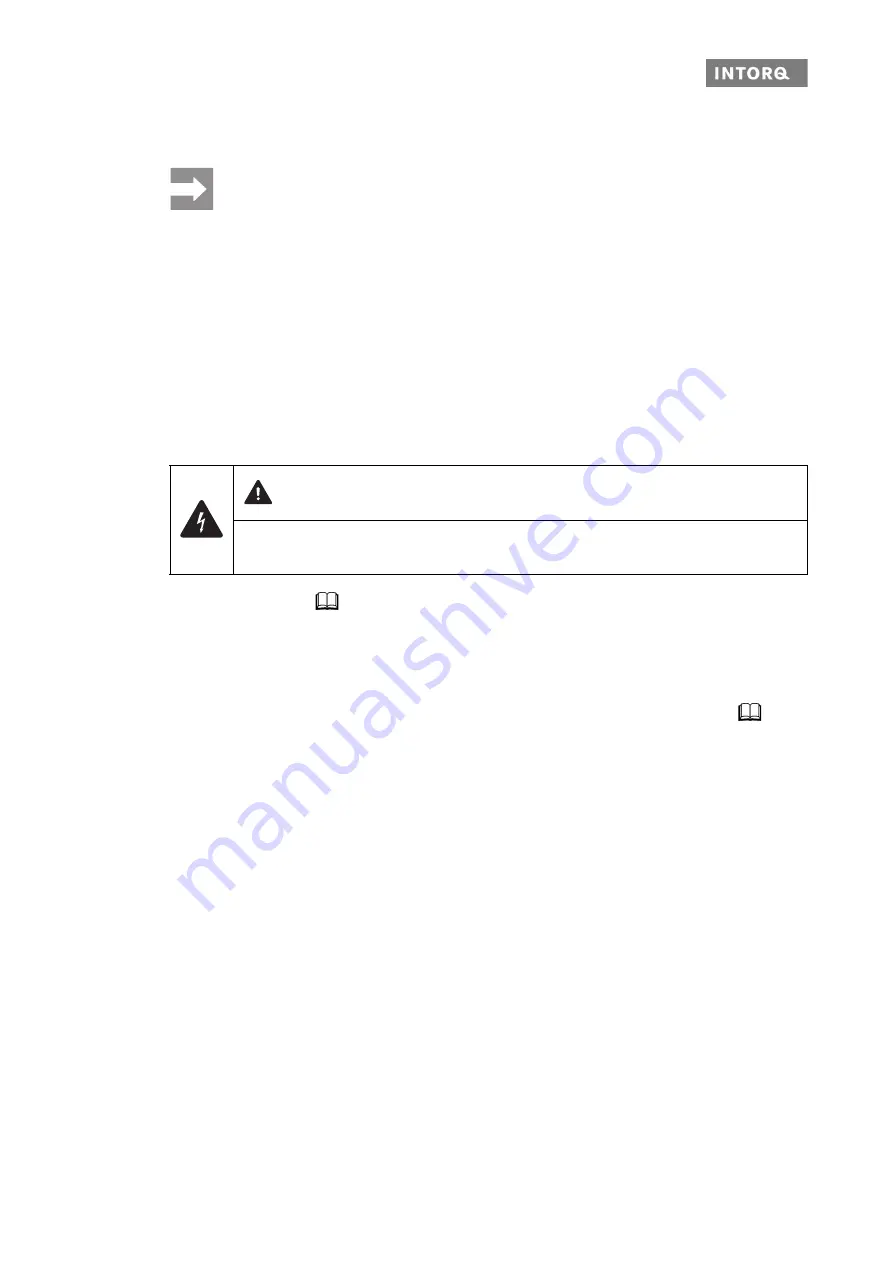
Maintenance and repair
INTORQ | BA 14.0200 | 02/2016
40
7.3
Maintenance
7.3.1
Check the brake
1. Remove the brake (
35 and 36).
2. Check the rotor:
Rotor thickness
-
Measure the rotor thickness using a caliper gauge.
-
Compare the measured rotor thickness with the minimally permissible rotor thickness (
16).
-
If necessary, exchange the rotor.
Gear teeth
-
Check the teeth of the rotor for wear and seizing marks.
-
If the gear teeth are damaged, replace the rotor.
3. Check hub:
-
Check the teeth of the rotor for wear and seizing marks.
-
If the gear teeth are damaged, dismount and replace the hub.
NOTICE
Observe the following for inspections and maintenance works:
❚
Brakes with defective armature plates, socket head cap screws, springs or counter friction
faces must always be replaced completely.
❚
Remove impurities through oil and grease using brake cleaning agents.
- Identify and remove the cause of impurity
- If required, replace the brake.
After replacing the rotor, the original braking torque will not be reached until the run-in opera-
tion for the friction surfaces has been completed. After replacing the rotor, the run-in armature
plates and counter friction faces have an increased initial rate of wear.
❚
For maintenance work, the brake must be dismantled.
DANGER
There is a risk of injury by electrical shock!
Switch off the voltage. The brake must be free of residual load torque.

























